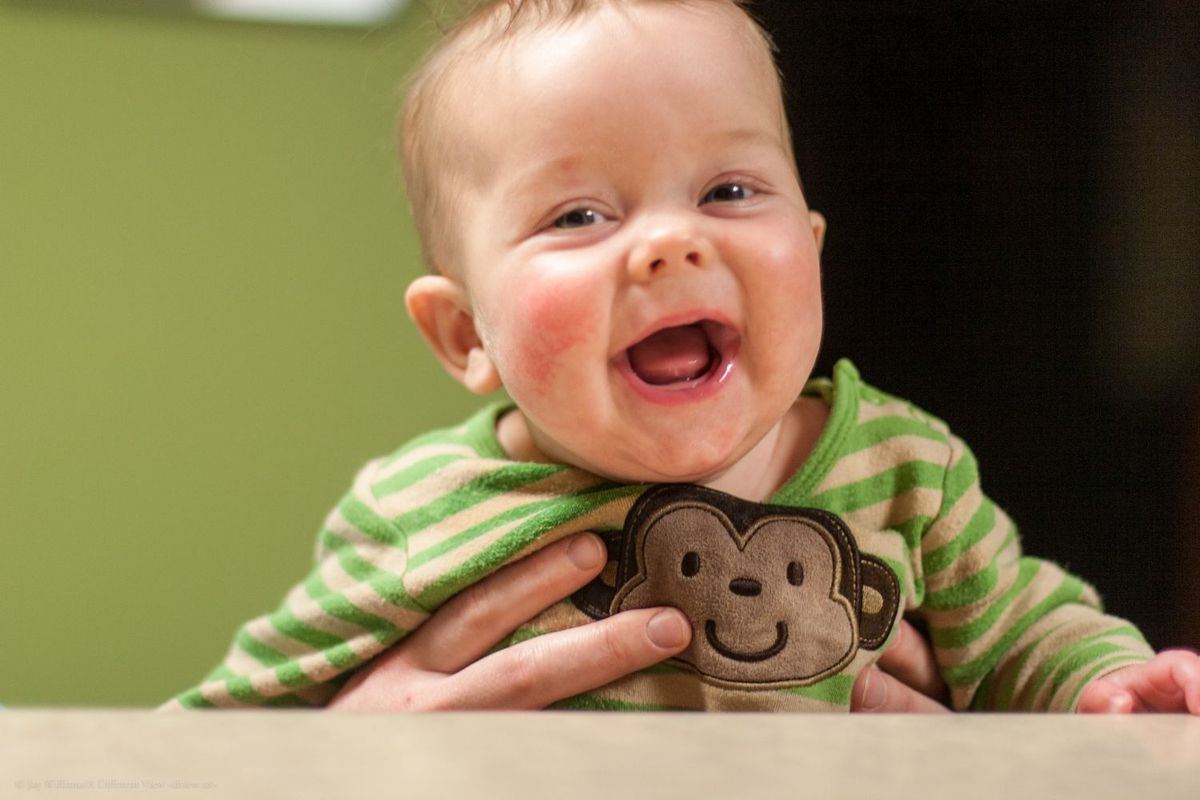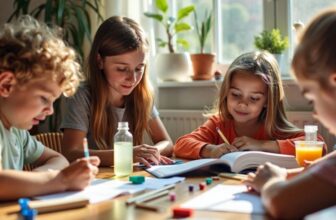
Embarking on the journey of parenting, one quickly discovers that each milestone in a child’s development is a miracle in itself. From the first incoherent scribbles that pave the way to cognitive growth, to the formation of the first sentences that mark the beginning of complex communication, child development is a fascinating and intricate process. ‘Milestones and Miracles: An Insight into Child Development’ delves into the various stages of growth, offering insights into nurturing well-being, celebrating individuality, guiding through developmental milestones, and supporting new parents in the postpartum phase and beyond.
Key Takeaways
- Understanding the developmental stages of children provides insight into their cognitive, language, motor, and social skills.
- Proper nutrition, oral hygiene, and addressing health concerns are crucial for the healthy growth and well-being of toddlers.
- Recognizing and respecting each child’s unique comfort zone and developmental path is key to nurturing their individuality.
- Parental strategies, such as potty training techniques and nap routines, are essential for successful developmental milestones.
- The postpartum period and parental well-being significantly impact a child’s development, highlighting the need for support and resources.
The Journey of Growth: Understanding Developmental Stages

The Significance of Scribbles: Early Drawing and Cognitive Milestones
Before children learn to communicate through language, they express themselves in the universal language of art. Scribbling is not just a random activity; it is a critical step in a child’s cognitive development and lays the groundwork for later skills.
- Drawing builds a child’s fine motor skills.
- It develops hand-eye coordination.
- Creative expression is nurtured through free drawing.
As children progress from scribbles to more structured forms, they are not only learning new artistic skills but are also engaging in healthy cognitive development. This process allows them to grapple with new ways to represent forms and relationships, which is essential for their overall growth.
Encouraging your child to draw freely and providing a variety of materials can support their journey through the stages of drawing development. From the first marks on paper to the depiction of people and objects, each stage reflects an expanding understanding of the world.
From First Words to First Sentences: Language Acquisition in Toddlers
The transition from single words to constructing full sentences is a pivotal moment in a toddler’s language development. The general consensus is that children should say their first word around their first birthday (12 months) and should start putting 2 words together by their second year. This progression is not just about vocabulary growth, but also about understanding the rules of language and how to communicate effectively.
Parental guidance plays a crucial role in nurturing this development. Engaging in daily conversations, reading stories, and singing songs are simple yet powerful ways to enhance a toddler’s language skills. Here are a few strategies to encourage language acquisition:
- Respond to your child’s attempts at communication, even if they are not perfect.
- Expand on their words by adding more information to model sentence structure.
- Use a variety of words and sentences in your own speech to provide a rich language environment.
Remember, every child develops at their own pace. Patience and positive reinforcement are key in supporting their journey from babbling to meaningful conversations.
The Role of Play in Enhancing Motor Skills and Social Interaction
Play is not just a simple pastime for children; it is a crucial aspect of their development. Through play, children learn to interact with their environment, developing both motor skills and social competencies. For instance, running around a playground or balancing blocks can significantly improve a child’s physical abilities. Similarly, playing together with others teaches valuable social skills like sharing and cooperation.
- Encouraging independent play helps foster creativity and self-reliance.
- Structured play, such as volunteering, instills empathy, compassion, and a sense of responsibility.
- Creating a toddler-friendly home environment can boost confidence and promote self-sufficiency.
Play is about learning and building important life skills, from problem solving to expressing ideas. It also strengthens the bond between children and their caregivers.
Each child’s journey through play is unique, and as they grow, their play becomes more complex, reflecting their advancing cognitive skills. It’s essential for caregivers to provide diverse play opportunities that challenge and engage children at every stage.
Nurturing Health and Well-being in Early Childhood

Choosing the Right Nutrition: Non-Dairy Milk Options for Toddlers
When it comes to selecting non-dairy milk for toddlers, unsweetened fortified soy milk stands out as a top recommendation by health professionals. It’s essential to consider the nutritional needs of toddlers during this critical period of growth. Soy milk is not only a great dairy alternative due to its complete protein profile, containing all 9 essential amino acids, but it’s also often fortified with vitamins and minerals to closely mimic the benefits of cow’s milk.
- Soy milk is one of the best dairy-free plant-based milk alternative drinks for toddlers.
- Fortified soy beverages are the only milk alternative that help meet a child’s recommended dairy needs.
For parents navigating the transition from breast milk or formula, it’s important to choose a milk alternative that supports their child’s development. While there are several plant-based options available, not all are created equal. It’s advisable to consult with a pediatrician to ensure the chosen alternative meets the nutritional requirements of your toddler.
Remember, the goal is to provide a balanced diet that supports healthy growth and development, while also catering to any dietary restrictions or allergies.
Oral Hygiene Essentials: When and How to Brush Baby Teeth
Establishing an oral hygiene routine is crucial for your baby’s dental health. Even before the first tooth erupts, it’s important to clean your baby’s gums. Use a clean, damp washcloth to gently rub the gums after each feeding. This practice helps in preventing the buildup of harmful bacteria.
Once the first tooth appears, usually around six months, you can introduce a soft-bristled baby toothbrush with just a smear of fluoride toothpaste. Here are the steps to ensure effective brushing:
- Choose a time when your baby is calm and not too hungry or full.
- Sit comfortably, holding your baby securely in your lap.
- Gently brush in small circles, covering all surfaces of the teeth and gums.
- Finish by brushing the tongue to remove bacteria and freshen breath.
Remember, the goal is to make brushing a positive experience. Praise your child and make it fun by singing songs or playing a game. As your child grows, encourage independence by letting them try brushing on their own, with supervision to ensure thorough cleaning.
Consistency is key in forming good oral hygiene habits. Aim to brush your child’s teeth twice a day, especially before bedtime, to protect against tooth decay.
Addressing Common Health Concerns: Is Miralax Safe for Toddlers?
When it comes to treating constipation in toddlers, parents may find themselves considering the use of Miralax. However, the safety of this medication for young children has been a topic of debate. Miralax has been a point of controversy for years, with concerns arising from an FDA study that reported severe emotional and psychiatric side effects in children.
- The FDA has not approved Miralax for use in children due to a lack of clinical trials.
- Alternative treatments should be considered, especially for long-term use.
- Consultation with a healthcare provider is crucial before administering any laxative to a toddler.
While Miralax is commonly prescribed, it’s essential to approach its use with caution and seek professional advice.
Celebrating Individuality: Unique Aspects of Child Development

Birthday Party Alternatives: Respecting Each Child’s Comfort Zone
Not every child is ready for a grand birthday celebration, and that’s perfectly okay. Respecting a child’s comfort zone is crucial when planning their special day. Start by including them in the brainstorming phase, allowing them to express their preferences and ideas. This can be as simple as choosing a theme that aligns with their interests, such as a favorite book or activity, rather than a large gathering that might overwhelm them.
It’s important to remember that a memorable birthday doesn’t have to follow a traditional format. Smaller, more intimate gatherings or even solo activities can be just as special.
Here are a few alternative ideas to consider:
- A family game night with their favorite board games.
- An outdoor adventure tailored to their love of nature.
- A craft day where they can create and explore their artistic side.
By focusing on what truly makes your child happy, you can create a birthday experience that honors their individuality and ensures they feel celebrated in a way that’s comfortable for them.
Understanding Imaginary Friends and Their Role in Development
Imaginary friends are a fascinating and integral part of many children’s developmental journey. Most kids initially develop imaginary companions because they’re fun to experiment with. At the same time, they serve as a safe space for children to express emotions, practice social skills, and explore their creativity.
- Imaginary friends can provide comfort during times of stress or change.
- They often help children process complex feelings and situations.
- These unseen companions encourage language development and storytelling abilities.
Imaginary friends are a completely normal part of childhood for many children and can have numerous benefits for development, including improved social skills.
While some may worry about the impact of these invisible playmates, research suggests that having an imaginary friend is a sign of a child’s advanced cognitive abilities. It’s a way for them to understand and navigate their world. As children grow and their social circles expand, these imaginary friends typically fade away, leaving behind a rich tapestry of childhood memories and learned skills.
Navigating Social Development for ‘Pandemic Babies’
The social development of children born during or just before the pandemic has been uniquely challenging. Babies who were born shortly before or after the COVID-19 pandemic are now toddlers exhibiting a mix of boundless energy at home and social apprehensions in public settings. Studies suggest that these pandemic babies may face delays in socio-emotional development, a concern for many parents and caregivers.
- Exposure to the pandemic, especially during the first year of life, has been linked to higher odds of positive screenings for socio-emotional issues.
- Infants and toddlers during the pandemic have faced socio-emotional development delays, according to recent research.
It is crucial to provide these children with opportunities to interact with peers and engage in social play, even if it means starting with smaller, more controlled environments. Patience and understanding from adults can help ease the transition into more social interactions.
As we continue to navigate the post-pandemic world, it’s important to monitor and support the social development of these young individuals, ensuring they have the tools and experiences necessary to thrive.
Parental Guidance: Strategies for Successful Milestones

Potty Training Success: Tips and Tricks for a Smooth Transition
Embarking on the journey of potty training can be a significant milestone for both toddlers and parents. First things first: readiness is key. Most children show signs of being ready for toilet training between ages 18 months and 3 years. Look out for cues like increased interest in the bathroom or staying dry for longer periods.
When you decide it’s time to start, consistency is your best ally. Establish a routine that both you and your child can stick to. Here are a few steps to guide you through the process:
- Choose the right equipment – a comfortable potty chair or seat adapter for your toilet.
- Set a schedule – have regular intervals for potty breaks.
- Celebrate successes – small rewards can encourage positive behavior.
- Be patient and keep it positive – accidents will happen, and that’s okay.
Remember, every child is unique, and what works for one may not work for another. Tailor your approach to fit your child’s individual needs and personality.
For those on the move, travel potty training can present its own set of challenges. An easy trick is to have a portable potty ready, so your child can continue to practice even when away from home. Anticipate what the transition will look like and prepare accordingly to maintain a sense of normalcy.
Pacifier Use: Balancing Comfort and Timing for Weaning
Pacifiers serve as a source of comfort for many infants and toddlers, becoming almost inseparable companions during the early years. However, as children grow, the need to wean off the pacifier arises. Choosing the right time for this transition is crucial, as it can impact both the child’s emotional well-being and dental health.
- Start Slow. * Begin by reducing pacifier use during the day, focusing initially on eliminating it during active hours and retaining it only for naps and nighttime. This gradual approach helps the child adjust without feeling overwhelmed.
Weaning is most effective when timed well. It’s a process that should align with the child’s readiness and family routines, ensuring a smooth transition away from the pacifier.
Remember, every child is unique, and what works for one may not work for another. Patience and consistency are key in helping your child embrace this new stage of development without their pacifier.
The Importance of Naps: Sleep Patterns in Toddlers
The rhythmic ebb and flow of a toddler’s day is punctuated by the tranquil oasis of naptime. Naptime is often an essential part of keeping infants and toddlers happy and rested, providing a much-needed break for both child and caregiver. As toddlers grow, their need for naps may change, raising the question of when to adjust their sleep schedules.
- For most toddlers and preschoolers, an afternoon nap remains a staple in their daily routine.
- The transition away from naps is a gradual process, typically occurring between the ages of 3 and 5.
- Observing your child’s behavior and sleep patterns can guide you in determining the right time to phase out naps.
Ensuring that toddlers get adequate rest during the day can lead to better sleep at night and overall improved well-being.
While sleep is a critical component of a toddler’s development, it’s important to recognize that each child is unique. Some may require less daytime sleep earlier on, while others continue to benefit from naps well into their preschool years. Monitoring and adjusting to your child’s individual needs will help maintain a harmonious balance in their growth and daily activities.
Embracing the Challenges: Postpartum and Beyond

Adjusting to Parenthood: Postpartum Support and Resources
The transition into parenthood can be as daunting as it is delightful. Navigating the postpartum period requires not only physical healing but also emotional and mental support. It’s essential for new parents to know that they are not alone and that resources are available to help them through this time.
- Weekly Online Support Group: Joining a free group can provide a sense of community and shared experience. Many groups are led by individuals with lived experience with postpartum challenges, offering a space for understanding and empathy.
- Perinatal Mental Health Support: Contacts and resources are crucial. Look for groups that address specific conditions like postpartum mood disorders or anxiety, and ensure they are accessible when you need them.
Embracing support is not a sign of weakness, but a step towards resilience and well-being.
Remember, the goal is to find what works for you and your family, whether that’s connecting with others through a support group, seeking professional counseling, or simply finding time for self-care. The journey of parenthood is unique for everyone, and finding the right support can make all the difference.
The Impact of Parental Well-being on Child Development
The well-being of parents is a cornerstone in the healthy development of a child. Parental mental health is not just a personal issue; it has profound implications on the nurturing environment a child grows up in. Many parents with mental health problems are able to provide safe and loving care, which does not negatively affect their children.
Parental influence on a child’s development is significant. Parents’ choices and emotional states can shape a child’s future, empowering them to foster a positive growth environment. Here are key ways parental well-being can impact a child:
- Emotional stability and security
- Modeling of healthy coping mechanisms
- Provision of a supportive and nurturing home
- Encouragement of positive social interactions
- Development of a child’s self-esteem and resilience
A child’s emotional and cognitive development is intricately linked to the psychological health of their parents. Ensuring that parents have access to mental health resources and support is crucial for the entire family’s well-being.
It is essential to recognize the role of parental well-being in shaping a child’s life. Addressing concerns and providing support not only benefits the parents but also lays a strong foundation for the child’s future.
Building a Supportive Community for New Parents
The transition into parenthood can be as daunting as it is delightful. Find your village as a new parent and create a support network that can offer guidance, empathy, and practical help. It’s essential to force yourself out the door and seek connections that resonate with your parenting journey.
- Connect with other parents through local meetups or online groups.
- Share experiences and resources that can ease the parenting load.
- Embrace the diversity of parenting styles and learn from one another.
Building a community of care is not just about finding people who can babysit on short notice. It’s about creating lasting bonds that enrich both your and your child’s life.
Remember, every parent’s experience is unique, but the challenges faced are often similar. By joining parenting groups like Babybells Parenting Support, you can find solace in shared experiences and collective wisdom. Acknowledge and embrace the support that comes from being part of a community, and watch as it transforms your parenting experience.
Conclusion
In the journey of child development, each milestone is a testament to the miraculous unfolding of human potential. From the first incoherent scribbles that pave the way for graphic mastery to the social adaptability of ‘pandemic babies,’ we’ve explored the diverse aspects of early growth. The challenges of potty training, the considerations for non-dairy milk, and the significance of oral hygiene are but a few facets of the complex tapestry of nurturing a child. As parents and caregivers, our role is to provide a supportive environment that honors each child’s unique path, knowing that the small victories and everyday miracles shape the adults they will become. Let us celebrate these milestones, for they are the building blocks of a future filled with promise and possibility.
Frequently Asked Questions
At what age do children typically begin to scribble, and why is it important?
Children typically begin to scribble around 18 months to 2 years old. Scribbling is important because it represents the beginning of graphic development and is linked to cognitive milestones in early childhood.
What are some appropriate birthday party alternatives for preschoolers?
For preschoolers who may not be ready for a big birthday bash, alternatives can include small family gatherings, playdates with a few close friends, outdoor picnics, or themed craft activities tailored to the child’s comfort level.
How can non-dairy milk options benefit toddlers, and what should parents consider when choosing one?
Non-dairy milk can be a good alternative for toddlers with lactose intolerance or dairy allergies. Parents should consider nutritional content, such as calcium and vitamin D levels, and choose unsweetened varieties to avoid added sugars.
When should parents start brushing their baby’s teeth, and what is the recommended technique?
Parents should start brushing their baby’s teeth as soon as the first tooth appears, using a soft-bristled toothbrush and a rice-sized amount of fluoride toothpaste. Brush gently in a circular motion, covering all surfaces of the teeth.
Is Miralax safe for toddlers, and when should it be used?
Miralax can be safe for toddlers when recommended by a pediatrician for constipation. It should be used according to the doctor’s instructions, and parents should monitor their child for any adverse reactions.
What are some signs that a toddler is ready for potty training, and how can parents support the process?
Signs of potty training readiness include showing interest in the bathroom, staying dry for longer periods, and being able to follow simple instructions. Parents can support the process by establishing a routine, using positive reinforcement, and being patient.






